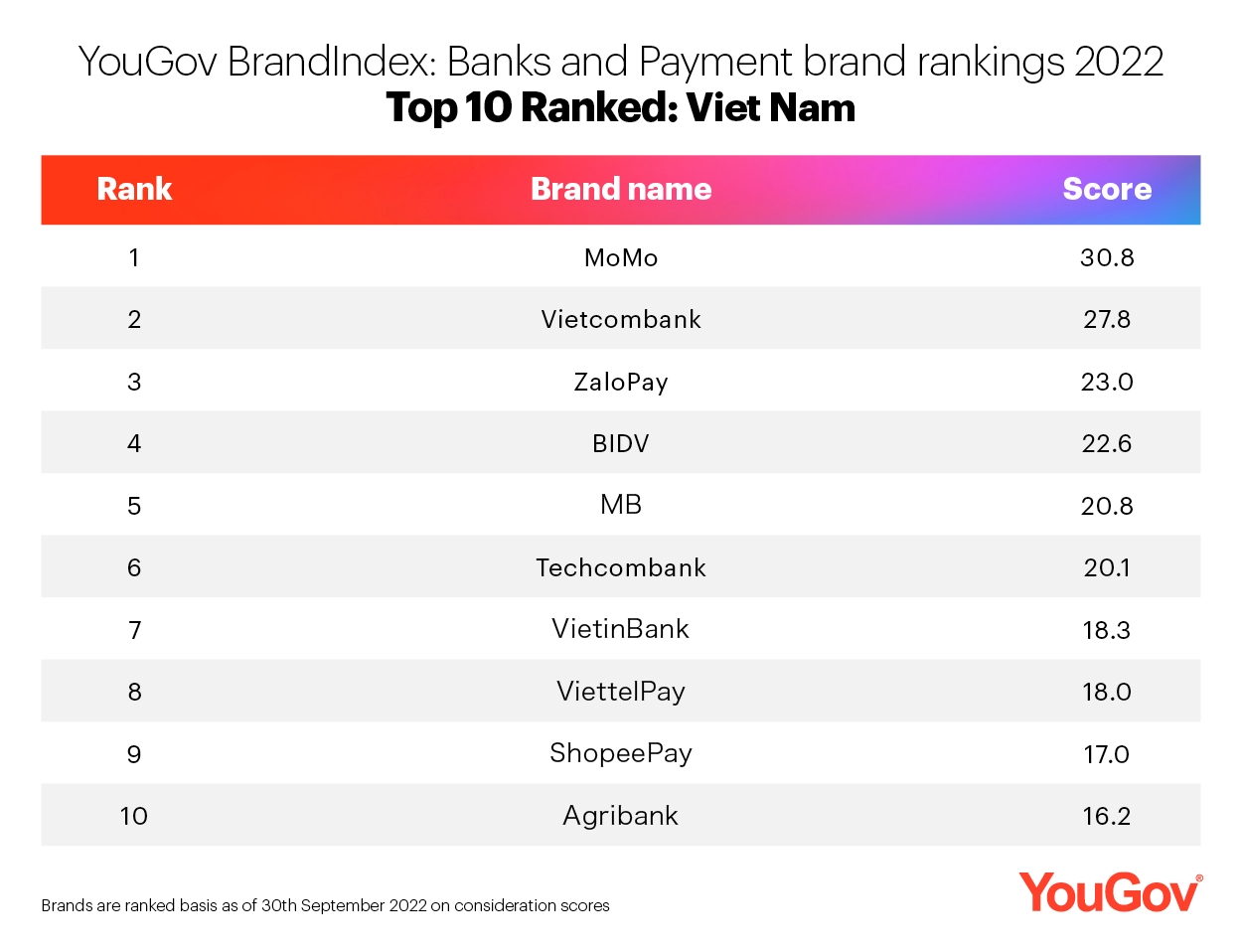Vietnam’s banking sector is relatively young and underutilized compared to its Asian neighbors. The country has one of the highest unbanked populations in the world, with 69% of the total population having no access to traditional banking services or similar financial organizations.
But while the number of people owning traditional bank cards is relatively low, the increasing popularity of e-wallets and fintech apps paints another story. As a matter of fact, there were around 19.2 million active mobile wallet users in Vietnam in 2020, with the number forecast to grow almost three-fold in 2025, data from Statista shows.
One of the leading e-wallet players in Vietnam is MoMo. The fintech app, Vietnam’s fourth startup unicorn, has over 31 million users to date.
What started as a SIM-card application for money transfer and mobile top-ups in 2010, MoMo evolved into a super-app that processes insurance payments and donations and provides an investment marketplace.

The first years of MoMo were spent on user education, explained Manisha Shah, Chief Financial Officer of the startup, at Vietcetera’s Industry Insights Session in November. As the concept of “digital wallets” was unfamiliar to most Vietnamese a decade ago, it took some time for MoMo to penetrate the market. It was only in 2016 that the app reached one million users.
MoMo’s success is a testament to the growing preference for more convenient digital modes of payment and financial transactions among tech-savvy Vietnamese consumers. The emerging e-wallet segment has been contributing significantly to the growth of the finance sector.
Convenience is a winning factor
A new ranking released by YouGov this week showed MoMo as the number one bank and payment brand in Vietnam in 2022, scoring 30.8 points.
The ranking is based on YouGov BrandIndex’s positive Consideration score, which measures the percentage of a brand’s customers who would consider it when next in the market to use a Financial Institutions & Services brand.
A significant number of brands in the top ten were from the fintech sector, hinting at the “changing face of consumer finance in Vietnam,” read the report. ZaloPay took third place, while ViettelPay and ShopeePay were ranked eighth and ninth, respectively.

Vietcombank, considered the leading bank in Vietnam, was ranked second. Other traditional banks – such as MB (fifth) and Techcombank (sixth) – have managed to maintain their positions in the market and feature as some of the most considered brands.
“The 2022 YouGov Financial Services rankings show that mobile banking is becoming more popular in Vietnam and fintech brands are gaining ground on more traditional financial players,” said Thue Quist Thomasen, CEO of Decision Lab, the exclusive partner of YouGov in Vietnam.
“Vietnamese consumers are embracing the ease and convenience of e-wallets and digital payments, presenting new challenges to long-established banks.”
E-wallets, mobile banking, and fintech platforms have been driving the country’s move toward a cashless society. The ease of making transactions and the speedy processing with just a few taps on one’s smartphone make these digital modes of payment a convenient option. Besides consumers, businesses have also taken advantage of digital payments to improve payment tracking, make cash flow more manageable, and gain financial security.
Bye-bye traditional banks?
What’s been implemented in Vietnam so far on digital payments and mobile banking is just the tip of the iceberg. But the progress is there, and it’s only getting stronger as consumers demand digital transformation.
And where customers go, businesses must follow. The fintech sector is not the death of traditional banks but a factor propelling them to innovate.

“Consumers are becoming more comfortable with digital-first products and mobile banking services. This presents both challenges and opportunities to the sector as a whole. Financial brands who understand this trend and adapt their marketing strategies to match can capitalize on this emerging consumer segment,” said Thue.
Banks that have served Vietnam for decades need drastic restructuring to develop and strengthen their digital channels for faster, easier banking transactions without their customers going to physical branches or ATMs.
According to a study titled Digital Transformation in Banking: A Case from Vietnam, most Vietnamese banks have either implemented or are developing their digital transformation strategies.
In the last five years, opening branches is no longer a primary goal for local banks as they lean more toward technological adoption, like launching user-friendly websites, mobile apps, and automated banking systems.
“...if commercial banks do not continue to proactively apply new technology, invest in modern equipment, and set up cooperation with fintech companies, they will be left behind in the technology competition,” the study concluded.
